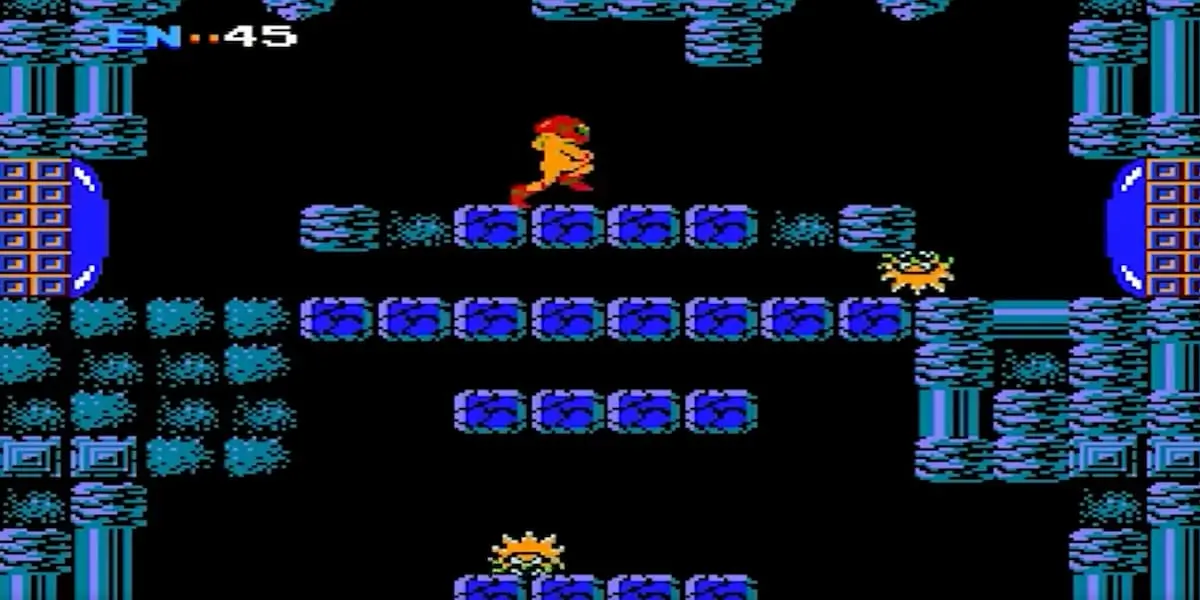It’s no secret that the gaming industry is big business.
Now worth more than the U.S. film and sports industries combined, the industry continues to grow at a rapid rate. In stellar-budget productions such as Breath of the Wild and The Last of Us, the lines between video games, film, and high-end music production have become increasingly blurred.
Online gaming has brought vast networks of previously disconnected users together, while the steady march of mobile gaming has opened up the sector to a huge number of casual users, often employing a “pay-to-play” model for even greater profits.
With this success, it follows that gaming provides a bountiful field of employment for UX designers. Games rely on much the same user interfaces as apps and websites. It’s integral to a game’s success that it provides an enjoyable user experience: It must be frictionless, intuitive, and above all, playable.
This article will dive deep into game UX, what you might expect from a typical game UX salary, and the current game UX jobs market outlook. Finally, we’ll outline the steps you need to take in order to secure your first role as a game UX designer.
To jump ahead to a certain section, use the clickable menu:
- What is game UX?
- Game UX salary and market outlook
- How to get a job as a game UX designer
- Key takeaways
1. What is game UX?
Game UX refers to the overall experience a player has while interacting with a video game. It encompasses all aspects of the player’s experience, including the game’s interface, controls, gameplay mechanics, visuals, audio, and overall design.
The goal of game UX is to create an enjoyable and engaging experience for players to keep them interested and motivated to continue playing.
Although sometimes interchangeable, game UX should not be confused with game UI. In gaming, the User Interface (UI) refers to the buttons, icons, and other notifications that appear on the screen in order to help the player navigate the game world.
A game UI designer focuses on crafting these visuals, whereas a game UX designer considers every aspect of the user’s experience when playing the game. In this sense, the principles of game UX are identical to that of traditional UX.
Traditional UX design is all about tending to the needs of users. Game UX differs in that the designers are responsible for building obstacles that users must overcome to progress within the game. Their job is to strike a balance between difficulty and reward so that players are engaged and entertained—but not stressed—by the flow of puzzles and problems sent their way.
In the early days of video games, user experiences were frequently stressful and unintuitive. Old-school games often relished in exerting a steep learning curve on players. Controls were usually clunky, and in-game signposting was often oblique, meaning getting “lost” within the game was a common occurrence. As a result, some games felt totally impenetrable.
 In titles such as Metroid (1986), players navigated large, hazardous labyrinths with little to no explanation of where they were supposed to go or how.
In titles such as Metroid (1986), players navigated large, hazardous labyrinths with little to no explanation of where they were supposed to go or how.
Contemporary game developers now focus on creating intuitive and responsive worlds that are easy for players to navigate while also designing gameplay mechanics that are both challenging and rewarding.
In what is a highly competitive market, they understand that these positive user experiences are crucial in order for the game to succeed commercially. If a game elicits a positive emotional response in the user, they are more likely to download it, continue playing, and tell their friends about the game.
This is where game UX comes in. As games have become bigger, more ambitious productions, games companies now employ dedicated game UX designers—who work alongside traditional developers, artists, and game testers.
The game UX designer’s role
The game UX designer’s job is to take the existing rules and mechanics of the game and make sense of them for the end-user. This means helping players get a handle on what they are actually supposed to be doing in the game.
Games developers are often so familiar with the content and work at such a granular level they often find it difficult to imagine what it’s like to engage with a game as a novice.
For this reason, a large part of the role of game UX is to make this player onboarding process as smooth as possible.
So, game UX acts as a bridge between the game and the player in much the same way as traditional UX designers working on apps and websites.
Game UX designers work to understand player behaviors and thinking processes, testing the product with real users and making iterations based on their feedback. This feedback can be gathered through various channels, such as surveys, interviews, user testing sessions, and online forums.
Once feedback is collected, designers need to analyze and synthesize it to identify patterns, common themes, and areas of improvement. This may involve categorizing feedback, prioritizing issues, and looking for insights that can inform design decisions.
How do they go about this? Read on.
Tasks and responsibilities
Game UX designers create immersive and engaging environments that keep players hooked on the game’s story and characters.
Responsibilities can include:
- Researching player needs, preferences, and behaviors to inform design decisions
- Creating wireframes, prototypes, and other design documents to communicate and iterate on design ideas
- Collaborating with game developers, artists, and other team members to ensure that game mechanics, user interfaces, and other design elements are consistent and cohesive
- Designing user interfaces and menus that are intuitive, easy to use, and visually appealing
- Creating game tutorials and onboarding experiences that effectively introduce players to game mechanics and controls
- Testing and evaluating designs with players to identify areas for improvement and make iterative changes
- Considering accessibility and inclusivity in design decisions to ensure that games are playable by as many people as possible
- Working with game producers to manage design schedules and priorities
It’s understood in the industry that game UX is a critical consideration, as it can have a significant impact on a player’s enjoyment and engagement with a game—and, therefore, the game’s success.
 The award-winning The Last of Us is known for its immersive UX and minimalistic UI, and has helped to set the modern standard for good game UX.
The award-winning The Last of Us is known for its immersive UX and minimalistic UI, and has helped to set the modern standard for good game UX.
2. Game UX salary and market outlook
Game UX salary
As one would expect, with the popularity of the market, game UX designers command a respectable salary. Though you might not start out on triple figures, there is ample opportunity to climb up the ranks.
According to ZipRecruiter, the average game UX designer salary in the United States is $104,925 per year.
Internationally, the salary is also competitive. According to Glassdoor, in Germany, UX designers can expect to earn between €41,000 and €81,000 (USD$43,754-$86440) per year.
In the United Kingdom, the UX designer’s salary ranges between £42,000 and £69,000 (USD$50,666-$83,237) per year.
However, as with any industry and role, the actual game UX salary will vary based on a number of factors, including location, company size, level of experience, level of education, and specific job responsibilities.
For example, a UX designer working at an industry mainstay is likely to earn a far higher starting salary; a designer at Electronic Arts (EA) earns an average of $125,500 annually, which includes a base salary of $109,000 with a $16,500 bonus.
Like any industry, designers with more experience and specialized skills are likely to earn more than entry-level designers and game UX designers may also receive additional compensation such as bonuses, profit sharing, and stock options, which can significantly increase their total compensation package.
Game UX market outlook
The market outlook for game UX designers is decidedly positive. As the gaming industry continues to grow and evolve rapidly, there is an increasing demand for skilled professionals who can create compelling and engaging user experiences for players.
The global game development software market, which includes game UX design, is expected to grow to $2.5 billion by 2030, with a compound annual growth rate of 10.1%.
The emergence of new technologies, such as virtual reality and augmented reality, is creating new opportunities for game UX designers. These technologies require specialized design skills and knowledge, making game UX designers valuable assets to companies developing VR and AR applications.
Overall, the future for game UX designers is strong, and the demand for skilled designers is expected to continue to grow in the coming years.
3. How to get a job as a game UX designer
There are no hard and fast rules about the qualifications required to get into a career in game UX, and a considerable amount of game UX designers don’t hold a traditional university degree.
That’s not to say that taking the classic academic pathway can’t provide a good foundation for a career in game UX, but the most important thing to remember is that the universal UX design elements applied to game UX are the same as those learned in any UX design course.
As such, certified courses and tech bootcamps, such as CareerFoundry’s UX design program, provide an ideal starting point for any budding game UX designer.
In addition to learning fundamentals with an online course, one of your biggest assets as a hopeful game UX designer will be your portfolio. A good portfolio is essential to secure that elusive first role.
And, of course, recruiters are always on the lookout for candidates with some experience in the field. But don’t worry; even with little to no experience in game UX, there are plenty of avenues to explore.
Attending a game jam, an event in which game developers, designers, artists, and other creatives come together to create video games in a short amount of time, is a great starting point.
Organizing your own group project is another way to get game UX hours under your belt, or you could start a blog analyzing your favorite examples of game UX.
And when the time comes to find your ideal game UX design role, there are a number of job portals to help you in your search.
These include:
- IxDA Jobs
- UX Jobs Board
- Dribbble
- Authentic Jobs
- Coroflot’s UX design jobs
- Smashing Magazine’s job board
- Glassdoor
- LinkedIn job search
Online programs like CareerFoundry’s also offer a job guarantee, a significant advantage in the industry.
4. Key takeaways
Video games are a huge, rapidly growing international market. Advances in cloud gaming, augmented reality, and AI are already shaping the next generation and creating entirely new monetization models.
Development studios realize that having a game UX designer on a team can mean the difference between success and failure, so it’s an essential consideration.
For the aspiring game UX designer, this means there are ample opportunities for a rewarding and stable career.
When it comes to grabbing that game UX role, your portfolio is invaluable. If you’re short on experience, try getting involved with online communities discussing the required skill sets.
The online gaming community is a friendly one, and there are numerous slack and discord groups dedicated to sharing information and advice about game UX.
A certified program is an invaluable starting point, and you can test the waters with CareerFoundy’s free UX design short course or speak directly with a program advisor to start your career right.
Specializations of the full UX design course, such as the UI for UX Designers component, are an ideal starting point to gain entry into the industry and offer a significant advantage.
If you’re interested in learning more about the world of UX design, check out these articles:
